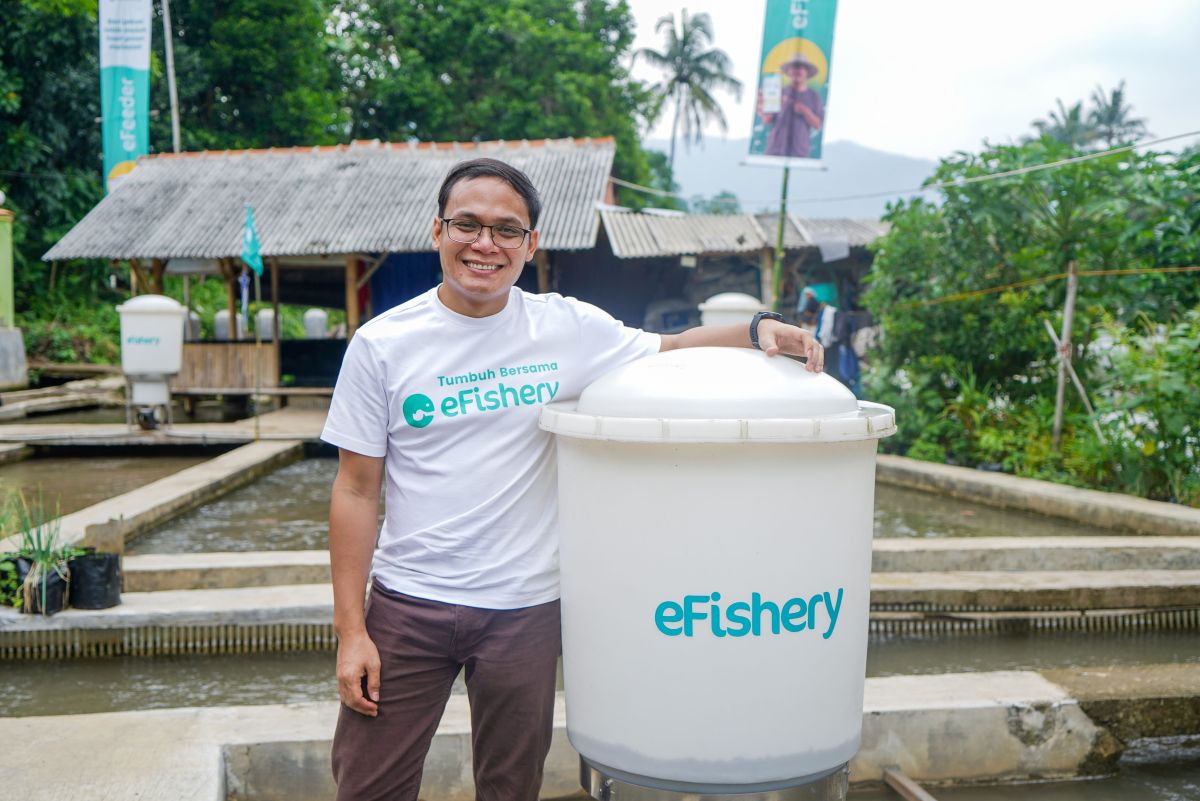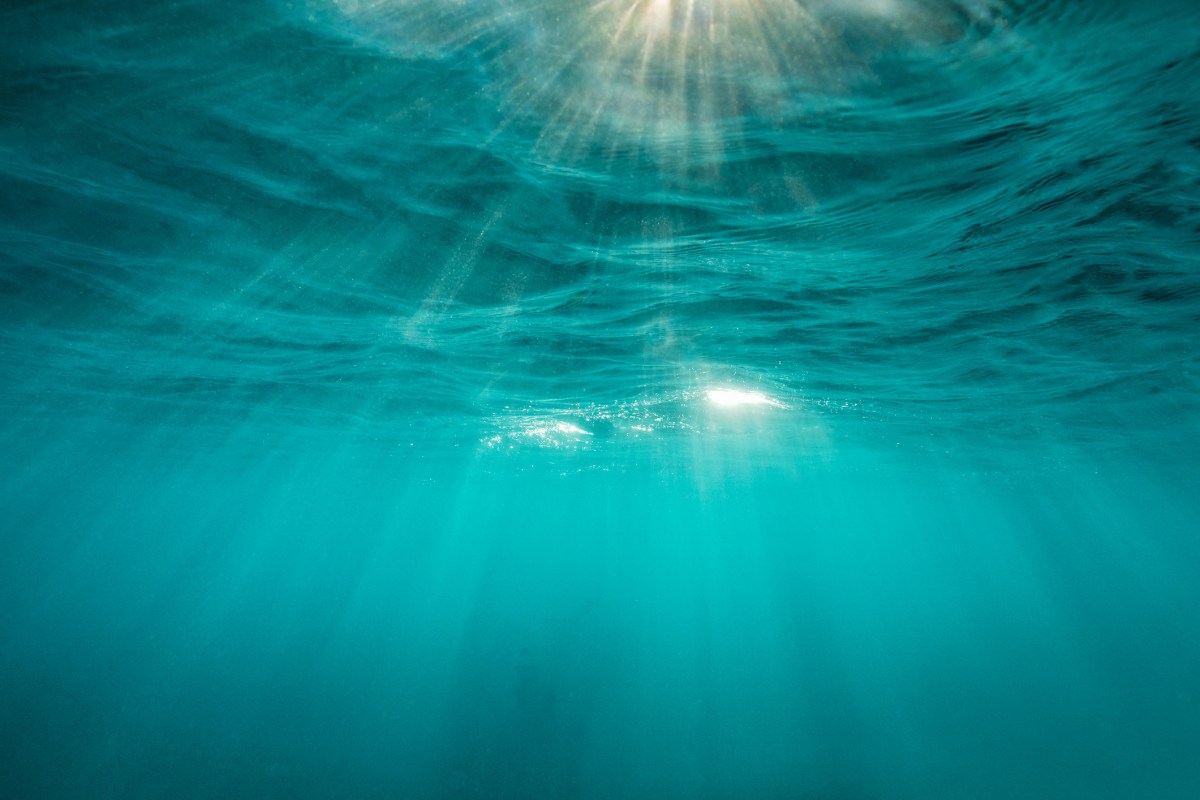Indonesian aquaculture startup eFishery nets $200M at unicorn valuation

After reports that it is raising new funding, Indonesian aquaculture startup eFishery announced today that it has netted $200 million in a Series D. The company, which makes a smart feeding system for fisheries, says this makes it the first startup in the global aquaculture industry to pass a $1 billion valuation. It’s goal is to reach one million aquaculture ponds in Indonesia by 2025 and expand overseas.
The funding was led by Abu Dhabi-based 42XFund and included participation from Kumpulan Wang Persaraan (Diperbadankan), Malaysia’s largest public sector pension fund, Swiss asset manager responsAbility and 500 Global. Existing investors Northstar, Temasek and SoftBank also returned for the round, with Goldman Sachs acting as an exclusive financial advisor to eFishery. TechCrunch last covered the startup when it announced its $90 million Series C in January 2022.
EFishery cites a study by the Demographic Institute of the University of Indonesia (LDUI) that showed in 2022, eFishery contributed 1.55% to Indonesia’s gross domestic product in the aquaculture sector. This is significant because Indonesia has the second largest fishing and aquaculture industry in the world, ranking only behind China. According to the World Atlas, the country produces 5.8 million tons of fish each year.
Founded in Bandung, West Java in 2013 by CEO Gibran Huzaifah (pictured above), fishery currently serves 70,000 fish and shrimp farmers in 280 cities across Indonesia. In addition to its IoT auto feeding system, eFishery’s platform includes marketplaces for selling fish and shrimp feed to farmers, fresh fish and shrimp products to B2B consumers and financial products for fish farmers.
Huzaifah started a catfish farming business when he was still in college. He told TechCrunch that during that time, he learned that feed management is crucial because 80% of total cost production is allocated to feeding. But many farmers still do hand feeding, resulting in uneven sizes of fish because not all get the same amount of food.
This is a problem because buyers have specific sizes of fish they want to purchase. Underfeeding isn’t the only problem, however— overfeeding results in nutrient runoff that pollutes water.
Huzaifah saw how tech was disrupting sectors like commerce, financial services and media, but “fish farming practice never changed in the last 30 years. I found it quite ironic that many innovations are developed to solve issues for urban citizens, like online shopping and food deliveries, but the essential sectors, such as agriculture and aquaculture, see almost zero digital innovation.”
After developing eFishery’s smart feeding system, however, Huzaifah faced resistance from fish farmers. After months of convincing them, “they finally wanted to try, not because they believed in the technology but because they pitied me.” One reason was that many farmers were not regular internet users. “I remember we had this Internet 101 with the farmers,” Huzaifah said. “We showed them how to create an email, use Facebook, get information from YouTube and other stuff.”
Even though Indonesia’s aquaculture is already very large, Huzaifah said it has only reached 7% to 9% of its total potential. Some challenges it faces includes fragmentation. Huzaifah explains that Indonesia has 34 provinces with different business practices, so it has to localize for each one.
“I learned the hard way that we have to respect the local players, including using local dialect and building relationships with the middlemen,” he said. “In one case, some middlemen poisoned our ponds. After having a discussion with them, we understood that they just want to do business, that they’re also entrepreneurs. So we found a way to turn them into our local partners because they have the local wisdom, connections, assets and so on.”
At farms, feeding accounts for 70% to 90% of total production cost and much of it is still done manually, just as when Huzaifah was running his catfish farm. eFisheryFeeder automatically distributes feed to fish and shrimp and helps farmers control feed by sensing fish appetite through vibrations, which increase as they get hungry. The system allows farmers to manage ponds from their smartphones and collects data like daily fish usage, the type and brand of feed, how many fish have been produced, fish behavior and appetite, stock density and mortality rate.
With aquaculture so important to Indonesia’s economy, other tech startup are addressing different aspects of the industry. In addition to eFishery, startups that have recently raised funding include Aruna, Delos and FishLog.
In order to improve Indonesia’s aquaculture industry and increase the amount of fish it exports, Hazaifah said communities, the government and institutions have to work together to improve fishery operation infrastructure so they can handle larger volumes of fish and improve product quality.
The country should encourage sustainable aquaculture practices, like training, promoting advanced techniques and ensuring access to quality fish seed, to increase fish production, and also engage in trade negotiations to get more buyers. Efishery plans to expand overseas by exporting fully traceable, antibiotic-free shrimp.
In a statement about the funding, 42XFund principal Iman Adiwibowo said, “The technology and comprehensive aquaculture solutions provided by eFishery have made a significant impact on the aquatech industry and have benefited small farmers in Indonesias. We are confident that eFishery will continue to promote a sustainable and inclusive economy, as well as contribute to environmental preservation goals not only in Indonesia but beyond.”


